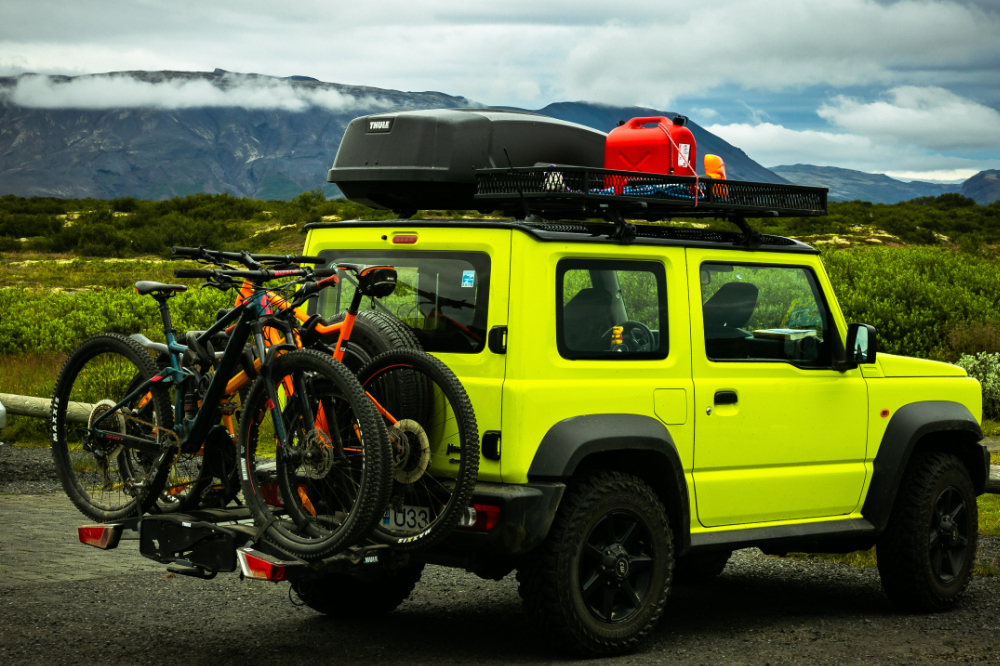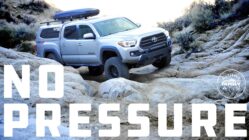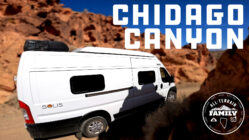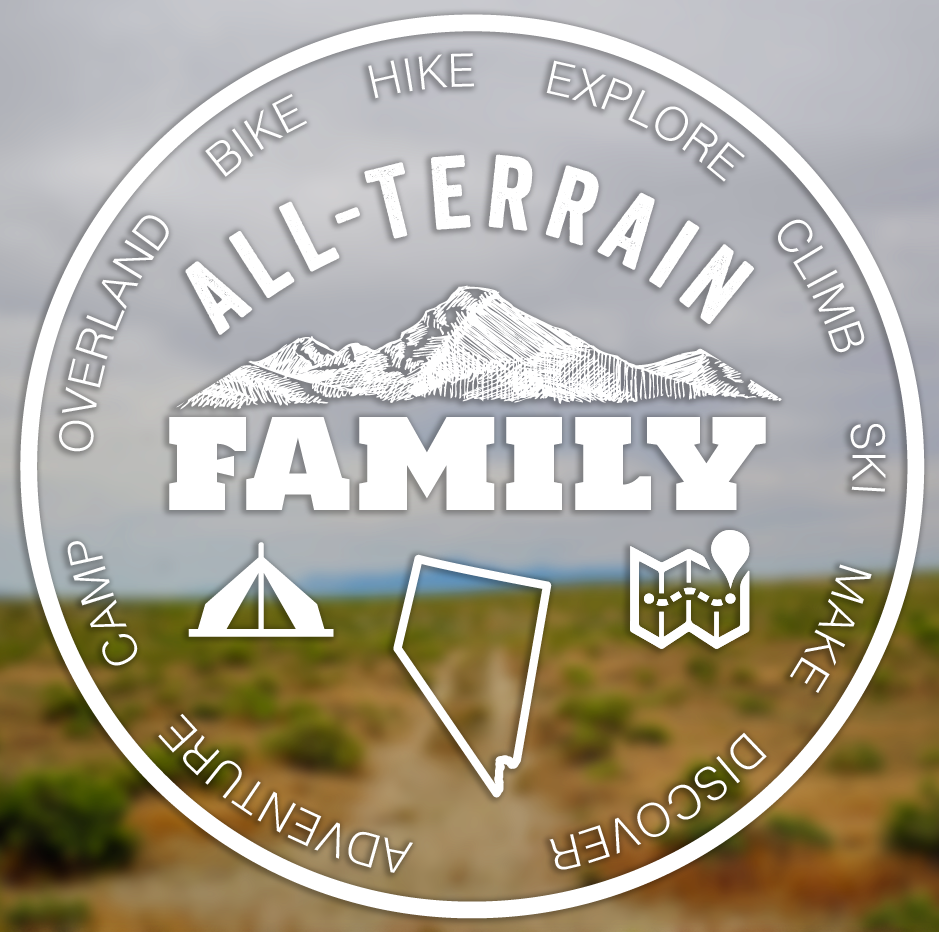
Bikes and overlanding go together like peanut butter and jelly. The two activities seem made for eachother. They’re both just different ways of exploring new, rugged terrain, looking for new adventures and beautiful vistas around every corner. But, when it comes to carrying your bike on your rig, things can get a little complicated. There are a whole bunch of bike racks out there, all with different designs and feature sets, and it can be challenging to figure out which one will best fit your needs and stand up to the adventures you have planned. Sure, maybe it’s not as exciting as shopping for a new mountain bike, but bike racks are just as important.
But choosing a new bike rack doesn’t need to be frustrating. We’ve laid out a simple series of questions to help you make sure you’re shopping for exactly the rack you need. We’ve tried a bunch of different racks, some good, and some terrible so that you don’t have to. And in this piece we’ve broken down key features, and the strengths and weaknesses of most styles of racks.
Question One: How many bikes do I want to carry?

This is the easy one. How many bikes are you planning on strapping onto this rack? It’s good to think about the whole range of use scenarios that you use your vehicle for. Sure, you may just need a one or two bike rack for big trips and long adventures, but do you like to shuttle some gravity mountain bike rides with your friends? Maybe you’d like to be able to help your ride group carpool sometimes? For most of us, a one or two bike rack will do the job 80% of the time, but what about that other 20%? You have two real options: either buy a modular rack, or make do with a rack with extra spaces.
Most tray-style two bike racks come with the option to bolt an extender with two more trays onto the end of the rack. This is a great option for a lot of people. For big trips where you just need two bikes, you can take the extender off and leave it at home, saving some weight, and making the overall length of your vehicle shorter. Then, when you need more capacity, you can throw it on and shuttle your friends around.
Hanging style racks are a great option for overlanders, too, and they have extra capacity. With hanging racks, your bikes extend the same distance out behind the car whether you have one bike on the rack, or six. So it doesn’t hurt to just buy the six bike option and always be ready to give folks a ride.
Question Two: How will this rack affect the off-road capabilities of my vehicle?
There’s no point in having a nice bike rack on the back of your vehicle if it cuts down the clearance so much that you can’t even make it to more remote trailheads. And if you’re already using hitch-mounted accessories or racks for other gear, you’ll need to figure out a workaround.

The first thing to think about is clearance. How far below the hitch does the rack extend, and how far back. On steeper hills or dips and ruts, the back of your bike rack can sag and drag. If you’re looking for a tray style rack, it’s easy to tell how far down it extends. With hanging racks it’s important to remember that sometimes your bike’s rear tire will hang further down than the bottom of the rack, and it’s not fun to learn that because you just smooshed a carbon rim into a rock. That said, there can be some tricks to gaining your clearance back with any hitch-style rack, like flipping drop hitch adapters to let the rack sit higher.
Beyond clearance, it’s important to think about how the rack will affect the utility of your system as a whole. Most racks can fold down to leave you room to get in and out of the back of your car, but if you have barn doors it’s important to make sure they’ll clear the rack, even with bikes on it. If they don’t, you may want to look into a swing away mount. And if you’re already using your trailer hitch for other accessories, you’ll have to get a hitch splitter to suspend your rack over whatever else you’re hauling. Other styles of racks, like roof racks may not affect your ground clearance, but they can be less secure when traveling over rough terrain.
Question Three: How secure do I need it to be?
Protection is important, sure that means protecting your brain with a bike helmet, but in the context of racks, it means two things: How well the bike is attached to the rack over rough terrain, and how hard it is to steal the bike from the rack. We’ll tackle each of those facets.
When it comes to security over rough terrain, a lot of it comes down to how good of a job you do loading the rack. Most bikes come off of racks that either weren’t secured completely to the car, or had the bike loaded improperly. So take care to make sure everything is tight and snug every time you load your bike. Beyond that, look for tray racks that only grip the wheels, and hanging racks that lock in both the fork and the back tire. You want to make sure there’s no way the frame or fork of your bike can rub on the rack, or another bike. You can also beef up most bike racks with extra rubber straps. Thick ski-style straps add an extra layer of security on rough roads at high speeds, and cost next to nothing.
Likewise, a roof rack might be an attractive option for preserving your ground clearance, but these racks can be a little bit scary if you’re traveling over a lot of rough roads. Since bikes are only anchored at the bottom, where they interface with the rack, they tend to wobble, which can put undue stress on your rack system and bike.
When it comes to the other kind of security, the old saying rings true: bike locks are designed to keep honest people honest. If you leave your bike unattended for more than ten minutes, a determined thief will be able to steal it, no matter how many built in locks the rack has. But, it’s still a good idea to look for a rack that both locks onto the car, and onto your bike. Many thieves will just take the whole rack off and leave with it, and the bikes.
If your rack doesn’t have an integrated lock system, invest in a big cable or chain lock, and figure out how to route it through all the bikes, their wheels, and a hardpoint on the rack or car. That way if you just need to leave the bikes for a moment as you run into a store, you can have some peace of mind.
Conclusion
You shouldn’t have to compromise with a bike rack that doesn’t work well for you and your adventures. So start asking yourself some questions, figure out what you’re really looking for out of a rack, and then get shopping.
This content is a paid advertorial.








Add comment